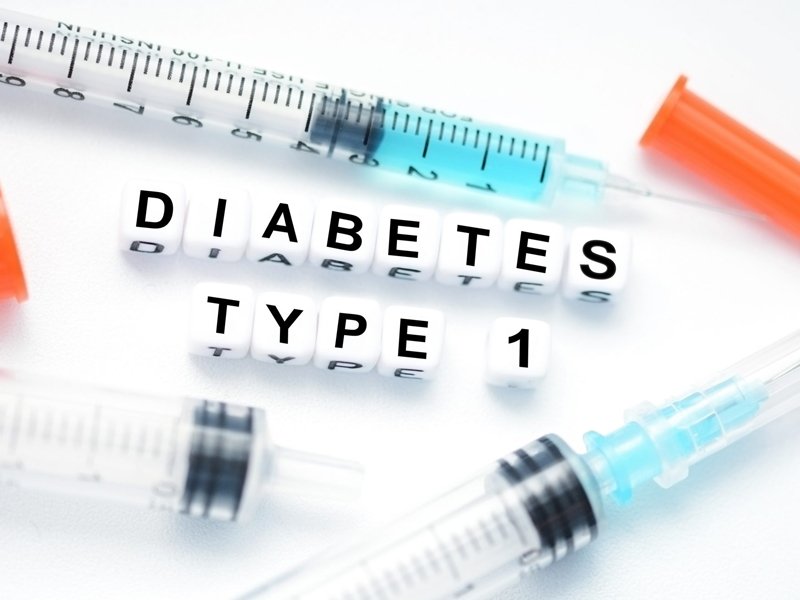
Type 1 Diabetes
What is Type 1 Diabetes?
Type 1 diabetes is a chronic condition where the pancreas, an organ in the body, cannot produce enough insulin. Insulin is a hormone that helps sugar (glucose) from the food we eat enter our cells to be used for energy. Without sufficient insulin, sugar builds up in the bloodstream, leading to high blood sugar levels, which can cause various health issues. This form of diabetes is often diagnosed in children and young adults, hence its previous name, "juvenile diabetes"
How is Type 1 Diabetes Detected in Children? What are the Signs?
The signs of type 1 diabetes can appear suddenly and may include:
- Increased thirst
- Frequent urination, including bed-wetting in children who are normally toilet-trained
- Extreme hunger
- Unintentional weight loss
- Fatigue and weakness
- Blurred vision
- Irritability or mood changes
If you notice these symptoms in your child, it is crucial to consult a healthcare provider promptly
What are the Causes of Type 1 Diabetes?
The exact cause of type 1 diabetes is unknown. However, it is believed to be an autoimmune disorder, where the body’s immune system mistakenly attacks and destroys insulin-producing cells in the pancreas. Factors that may contribute to this condition include:
- Genetics: A family history of type 1 diabetes can increases the risk.
- Environmental Factors: Certain viruses may trigger the immune response that leads to diabetes.
What are the Possible Complications of Type 1 Diabetes?
If not managed properly, type 1 diabetes can lead to serious complications, including:
- Diabetic Ketoacidosis (DKA): A life-threatening condition that occurs when the body starts breaking down fat for energy, leading to a buildup of acids called ketones in the blood.
- Heart and Blood Vessel Disease: Increased risk of heart disease and stroke later in life.
- Nerve Damage: High blood sugar can damage nerves, leading to pain or loss of feeling.
- Kidney Damage: Diabetes can harm the kidneys' filtering system.
- Eye Damage: Can lead to vision problems and even blindness.
- Skin and Foot Problems: Increased risk of infections and ulcers.
How is Type 1 Diabetes Treated?
While there is no cure for type 1 diabetes, it can be effectively managed through a combination of treatments:
- Insulin Therapy: People with type 1 diabetes require lifelong insulin therapy. This can be administered through multiple daily injections or an insulin pump, which provides a continuous supply of insulin.
- Blood Sugar Monitoring: Regular monitoring of blood sugar levels is essential. This is typically done using a glucose meter or continuous glucose monitor (CGM).
- Diet and Nutrition: A balanced diet that includes carbohydrates, proteins, and fats is crucial. People need to learn how to count carbohydrates to match their insulin doses with food intake.
- Physical Activity: Regular exercise is important for overall health and can help manage blood sugar levels.
- Education and Support: Families should receive education on managing diabetes, including recognizing signs of high or low blood sugar and how to respond appropriately. Support groups and diabetes camps can also provide valuable resources and community.
Does Type 1 Diabetes only occur in childhood?
Type 1 diabetes is often associated with children and young adults, but it can actually develop at any age. While it is most commonly diagnosed in children, particularly between the ages of 4 to 7 years and during early puberty (ages 10 to 14 years), by some studies more than half of all new cases are now identified in adults. Recent studies show that adult-onset type 1 diabetes is increasingly recognized, and many adults may not require insulin immediately after diagnosis. This condition, sometimes referred to as Latent Autoimmune Diabetes in Adults (LADA), can mimic type 2 diabetes, leading to misdiagnosis.
Please visit the following link to get more information
https://www.healthshots.com/daily-health/chrissy-teigens-son-has-type-1-diabetes/